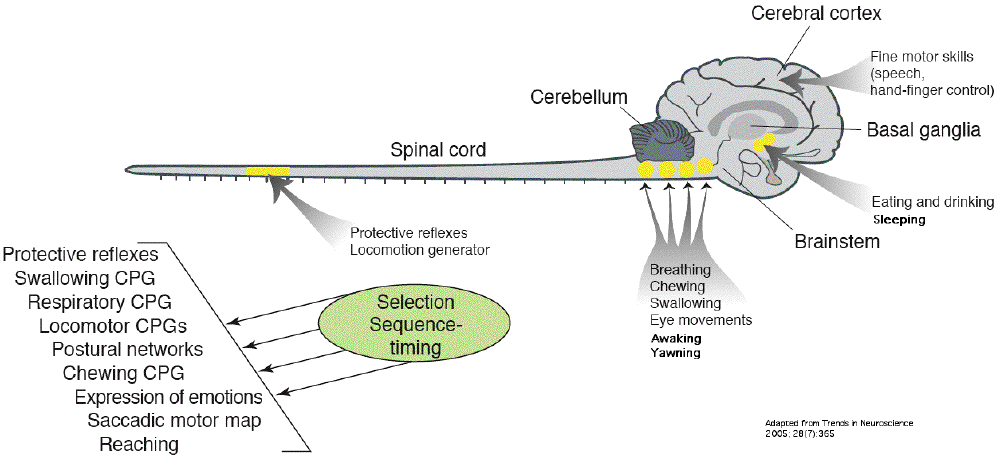- Abstract : Almost all the vertebrates
yawn, testifying the phylogenetic old origins of
this behavior. Correlatively speaking, yawning
shows an ontogenical precociousness since it
occurs as early as 12 weeks after conception and
remains relatively unchanged throughout life.
Thus, it is contended that these common
characteristics and their diencephalic origin
allow to model an approach from which emerges a
pivotal link between yawning and REM sleep.
Yawning and stretching reverse the muscular
atonia of the REM-sleep and reopen the collapsed
airways. Yawning appears as a powerful muscular
stretch, recruiting specific control systems
particularly the paraventricular nucleus of the
hypothalamus, the Locus Coeruleus and the
reticular activating system from which the vigor
of this ancestral vestige, surviving throughout
evolution with little variation, may increase
arousal.
-
- On the other hand, the
James-Lange theory proposes that afferent
feedback from muscles and viscera provides the
brain with a feeling that characterizes the
active motivational state and arousal. On this
basis and using selected supporting findings
from the literature and from data provided by
daily life, it is contended that yawning takes
part in interoceptiveness by its capacity to
increase arousal and self-awareness. Adaptative
behaviors depend on interactions among the
nervous system and the body by a continuous
feedback between them. The body's schema is a
main component of the self, and interoceptive
process is essential to awareness of the body
and arousal. Yawning contributes to bodily
consciousness as a behavior affiliating a
sensory motor act and his perception from which
pleasure is derived. Yawning can be seen as a
proprioceptive performance awareness which
inwardly provides a pre-reflective sense of
one's body and a reappraisal of the body schema.
The behavioral consequences of adopting specific
regulatory strategies and the neural systems
involved act upon attention and cognitive
changes.Thus, it is proposed that yawning is a
part of interoceptiveness by its capacity to
increase arousal and self-awareness.
-

-

|